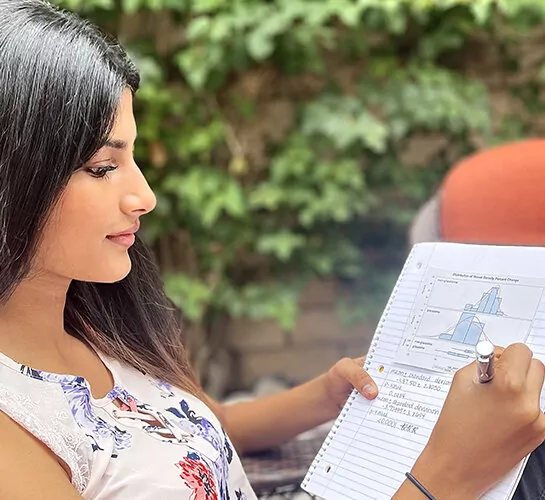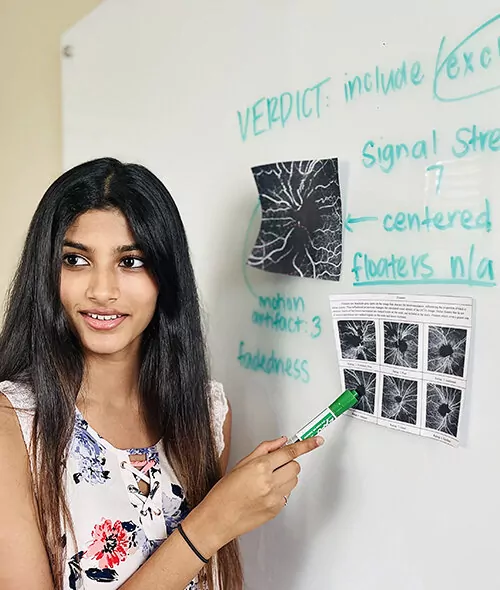Deeper Dive
My passion for ophthalmology started when I was 7 years old-- one of my very close family members told me that he was diagnosed with Retinitis Pigmentosa, an irreversible and untreatable visual impairment. I was heartbroken that my role model could barely see my face and would soon be able to see nothing at all. As my family member’s confidence was crumbling as fast as his condition was deteriorating, I was determined to learn more about his visual impairment and potential treatments for the future. During this process, I realized I was very passionate about ophthalmology, specifically its research, and was interested in pursuing it as a career.
So, in the summer of 2020, I reached out to Professor Grace Richter at USC’s Keck School of Medicine, eager to get involved in her ophthalmologic research of visual impairments. Throughout the summer, I worked as part of Professor Richter’s team, learning more about glaucomatous fundamentals and the Optical Coherence Tomography Angiography (OCTA) machine as a co-author on her research paper. Then a month later, my family member was diagnosed with glaucoma, a second irreversible visual impairment, and got visual field tests done by his ophthalmologist. Curious to understand more about his visual loss and how it was assessed in visual field tests, I independently researched the logistics behind visual tests taken by the Humphrey Field Analyzer. As I entered my junior year, I started taking the selective AP Research course at my high school. For my AP Research research paper, I decided to investigate a combination of my experiences at USC and my newly acquired knowledge of visual tests. I was interested in comparing two different means of glaucoma detection with each other, the OCTA machine and Humphrey Field Analyzer, to investigate the potential of early glaucoma detection, and hence earlier administrable treatment. As a high school researcher, I faced many challenges. Many regulations restricted my access to only deidentified patient data. For this reason, new data could not be morally and independently collected. So, I utilized databases instead. I only had 23 eyes in the non-glaucomatous group and 24 in the glaucomatous group. Having a larger number of patients would have been more ideal, as it would have increased the power of my t-test. This would have improved the accuracy of the averages and p-values presented in the results section, hence providing stronger evidence of whether a certain machine was statistically significant in terms of visual deterioration. In other words, it is possible that if I was able to increase my cohort size to 100 patients, the p-value could have changed. In the future, I hope to reach out to other universities and access their databases to add to my research dataset. Ultimately, however, the strict exclusion factors enacted allowed my research to be more representative of glaucomatous cases and hence produced more accurate p-values than the larger original dataset.
My findings have larger impacts and broader implications in the body of ophthalmologic knowledge: vessel density percent change can provide earlier signs of glaucoma than the conventional mean deviation difference in visual tests. This information is crucial in preserving patient eyesight. If glaucomatous visual deterioration is identified at an earlier stage, ophthalmologists would be able to administer treatment (ex: specialized eye drops or intraocular eye pressure surgeries) earlier. This would slow vision deterioration in glaucomatous patients, allowing them to cherish a greater portion of their eyesight. My research provides an additional means of earlier glaucoma detection, which in turn has the potential to administer earlier treatment and preserve a greater degree of vision. Glaucoma has impacted around 80 million people worldwide and is projected to impact 111 million by 2040. Research findings like mine in earlier glaucoma detection have the potential to slow visual deterioration and prevent irreversible blindness in millions. My research contributes to the future of bringing a vibrant world to the low-vision community.



